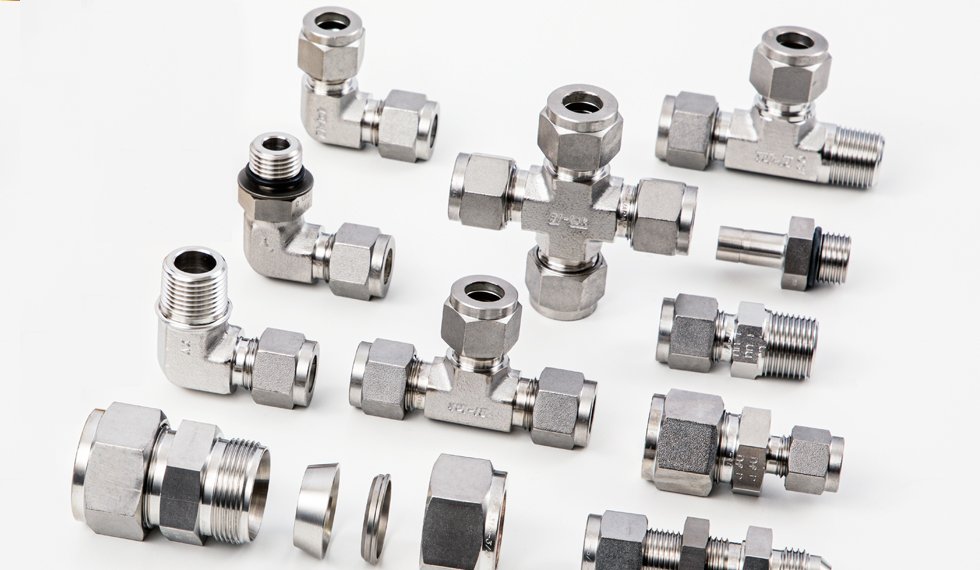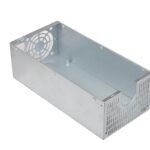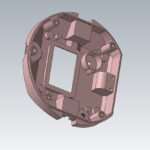You must bring diverse processes together to achieve a shared goal in production. When we make a system component, we need to think about how we will use it, where we will use it, and its dimensions. We (QBH Technology) create our goods on that basis. As with sorts of fits, we can examine how they relate to various components.
What Do We Mean By Fit?
There must be a fit between the hole and the shaft for proper installation. We can gauge the degree of tightness or looseness between two components with fits. As a result, it’s a two-component connection.
The clearance between two mating parts determines the size of the engineering fit when apart, and many other components are being developed as geometrical dimensions.
Fits have defined the phrase as a “shaft and hollow” in engineering. So, the degree of freedom of tightness between two mating components is defined like this: Comparing two shoe types, such as running and sliding, Take a look at this example: we have two holes and a shaft.
We build the shaft to slide into the hole in the same sliding feet.

Smallest and Largest Hole and Shaft!
The following information will help you determine the smallest and largest diameters of the shaft and hole:
- We have the smallest and largest limit for holes and shafts. · The shaft’s smallest diameter or smallest diameter is meant by the term “smallest limit.” the term “largest limit” refers to the largest diameter or, in other words, the largest possible length of a shaft.
- We may adjust the hole and shaft dimensions from the smallest to the largest.
- Adding material to a hole enlarges it; hence the term “greatest limit” refers to the amount of material that can be removed from the hole before it reaches its largest size.
- When we talk about the hole’s minimal limit, we refer to the largest amount of material that can fit within.
- Because the hole and shaft are arranged in such a way that they face one another.
- For shafts with minimal material, the shaft’s size is also minimal.
- In contrast, the greatest amount of material exists in a hole in the “smallest limit,” and the greatest amount of material removed from a hole is the “largest limit.”
What Are The Different Types Of Fit?
In manufacturing and mechanical engineering, there are three main forms of fit.
Type#1: Fitting Clearance
When unfettered mobility and some degree of playfulness are needed, clearance fit matings allow for a looser fit. A clearance fit is called for when elements need to slip in and out or when alignment may be guided but does not must extreme accuracy.
Type#2: Fitting Interference
It is far more difficult to fit interference than a clearance fit. The interference fit, also known as a press fit or friction fit, requires some degree of force to unite two components.
We can use an interference fit to press a bushing, bearing, dowel pin, or another object into its mating components.
Type#3: Transition Fit
There are two kinds of fits: clearance and interference. Transition fits are required when we must achieve precise alignment and matching components. These are sometimes known as a slip or a push-fit. Although the clearance is more than a press/interference fit, it is narrower and should drop any extra joint play or movement.
Finding the Right Fit for Your Project!
To select the best match for your tasks, you must first grasp several concepts. Here are a few things that we (QBH Technology) researched for you to keep an eye out for:
1. Application
Various options are available if you’re looking for a certain sort of fit for a specific reason.
Choosing the ideal fits for a project should be as simple as comparing the accuracy and tolerances displayed by various types of fits and the planned function of the product.
2. Budget
You should know your budget before choosing the best forms of fit for your merchandise. Fits with tighter tolerances, for example, will be more expensive than usual.
As a result, you must consider your alternatives. You are getting a fit that reduces product development costs while delivering the necessary tolerance.
3. Tolerance
Product tolerance is a notion that we must grasp to select the right fit for a certain product. The more detailed you are, the more likely you will get what you desire.
Besides, it would help to decide whether the parts should revolve in a complete circle or be tight.
Tolerance slack, or the entire largest or lowest tolerance of a specific measurement, is something else to watch. If the resultant tolerance is high, this is critical.

When to Use Press Fits in Assembly?
I may be talking about your favorite pair of jeans or a press-fit that adapts to every environment. It keeps pieces in perfect alignment, is simple to introduce, and forms a strong link.
Press-fit connectors offer so many advantages that you may ask why they aren’t used for everything else.
There are advantages and disadvantages to interference fittings, as there are press fits (unlike skinny jeans, press fits will never go out of style).
In other words, what are the most important characteristics of press fits, and do you need them for your particular use case?
▬ No Plastic Press Fits
Press fittings rely on friction and continual tension. If you press a large pin into a hole in steel, it will stay there forever. Under persistent pressure, plastic will flow, and the tension, and the friction it causes, will finally evaporate. Wearing jeans to a black-tie event is like wearing sneakers to a black-tie event.
▬ Using Interference Fit to Calculate Force
Here, let’s look at press-fit techniques in a more positive light. As before stated, the assembly technique is predicated on two elements competing for the same amount of space. But, the question remains: How much meddling is too much? Take a look at how your jeans fit this time: its okay if it’s a touch tight, but if it’s too tight, you risk appearing like Justin Bieber.
The “Beliebers” may want to take note.) Skip to the end of the article if you’d like to. (I have nothing to impart to you. We know how tight the interference fit should be, unlike jeans. Dowel pins will make our calculations a lot simpler. But how can you determine if the interference is enough to hold the pieces together?
For the time being, let’s create a mental model and then go to the formula. Pins and holes both strive to restore their previous diameter when inserted into a hole. The pin tries to press outward, while the hole tries to press inward. The typical force created by the friction between the two pieces helps us determine how much of a grip we’ll get.
Look at a half-inch diameter steel dowel pin inserted one inch deep into a steel plate for a realistic illustration.
Because it’s a national number, I’m not sure why a half-inch hole is nominal since the pin is somewhat bigger and the hole is smaller.
Half-inch pins in the standard series have a diameter of 0.5002 inches, two-tenths of an inch larger than normal. We get 0.0007 inches of diametrical interference with 0.4995-inch smallest hole-size. That may sound insignificant, but as you’ll soon discover, it’s a lot.
▬ Restrictions on Tolerances and Alignment
A small amount of interference may have a huge impact. Also, to hold your pieces together, the axial holding force is needed to assemble them. You risk damaging the hydraulic press if you don’t define press fittings. It would help avoid press-fitting for ordinary industrial assembly because of this tight machining tolerance—it isn’t DFM/DFA friendly.
To determine the smallest and largest holding force and assembly force for different hole diametrical tolerances, you may use the calculator found here.
But, the diameter isn’t the only factor to consider. Because pins are sold in pairs, keep in mind how far apart the pins are from one another.
▬ Thermal and Material Constraints
Every substance shrinks in the cold, although the pace at which this happens varies. To illustrate, imagine that you’ve used a 1-in aluminum pin to fasten together two-in stainless steel parts with a diametrical interference of 0.0007 inches.
CNC aluminum will shrink 0.0000125 in/in for every degree Fahrenheit, whereas steel shrinks by less than half of that amount; this is based on the linear expansion coefficient of the two sections.
At 75 degrees, you’ll lose all the press fit’s holding force if you move it down to 25 degrees below zero. As a result, create press fittings; choose materials with equal thermal expansion.
▬ Excessive Restraint and Alternate Joints
Press fitting’s plain strength—their ability to identify and join—is a flaw. A machinist can’t dimension to the thousandth of an inch since the two functions are intertwined and cannot be calculated (or to the micron, for those across the pond).
Please don’t give up hope, even though journalistic protests have limits. There are a plethora of contemporary design options.
Alignment and assembly in plastics are facilitated by locating pins and snap fittings. A few brief examples, but mechanical assembly choices are infinite.
Final Thoughts
It isn’t effortless to use different fit types and put them to use in various mechanical applications. After reading this article, you’ll have complete knowledge of a fit and its multiple sorts.
Choosing the proper people for your projects starts with doing your homework, and this article explains how to do that. What a fit is and how to use it are not the same.
While this tutorial will teach you design fundamentals, outsourcing to the right company can help you stand out from the crowd.
At QBH Technology, we are in the best position to meet your needs in terms of quality and pricing. Your product’s quality will soar far above your competitors’ when you work with us.





